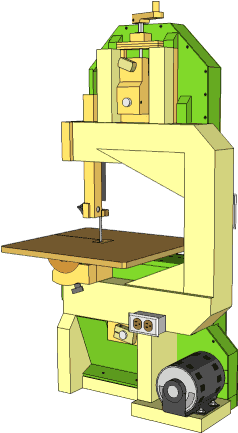I'm making a dining room table which should fit at least 8 people. This is a lot of table, and this very long stock must be jointed somehow. In a way, I'm glad that I encounter this snag while I'm working on the stretcher part of the table because jointing for edge gluing will be taking this seemingly impossible task to a whole new height.
Method 1 - Roller stand to extend the jointer's in/outfeed.
This simply doesn't work: there seems to be no way to align the roller stand suitably. The more I joint, the more stock I lose near the ends of the board. I've got a 6" jointer, and must joint a 7' board.
Method 2 - Handplane!
With my largest handplane a No.5, I do not feel confident that I can remove curvatures over longer length than the length of the place (which is shorter because of the angle of attack). In hinsight, I guess that I could make a planing guide with a straightedge... mmm, I already have moved-on.
Method 3 - Tablesaw!
Here is the idea: I screw a straight piece of sheet good to my board (luckily I have some waste where this can be done). This melamine extends beyond the far edge to be jointed so that it is the only point of contact with the tablesaw fence. I then set the fence to take light passes until the jointed edge is completely straight. Once I've got one good edge, I can use this edge to mill The other side.
After action report
I tried method #3 and got decent results. The 4" melanine guide was bending a bit (maybe 1/32" in the middle), so a third screw in the midpoint would have made it more stable. This was good enough for my current piece because I was cutting down to smaller parts and re-jointing. However, this is not going to be good enough to joint for edge gluing the components of my table top.












